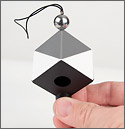 It’s small and unassuming, but Datacolor’s SpyderCube was one of the coolest things I saw at PMA this year. It looks like a small toy – a photographer’s dradle, maybe. But the SpyderCube is actually a sophisticated white balance and exposure tool. I wanted one as soon as I saw it. It’s small enough to keep in any camera bag and it makes a real difference in the quality of your final images. Shoot a RAW photo of it in any kind of lighting and you’re pretty much guaranteed accurate color and exposure with minimal post-processing.
It’s small and unassuming, but Datacolor’s SpyderCube was one of the coolest things I saw at PMA this year. It looks like a small toy – a photographer’s dradle, maybe. But the SpyderCube is actually a sophisticated white balance and exposure tool. I wanted one as soon as I saw it. It’s small enough to keep in any camera bag and it makes a real difference in the quality of your final images. Shoot a RAW photo of it in any kind of lighting and you’re pretty much guaranteed accurate color and exposure with minimal post-processing.
| “The SpyderCube makes your camera more intelligent! It captures in a single shot a wide range of color and exposure data.” From the official SpyderCube Web page |
Your digital camera’s auto white balance averages all the color values in a scene to determine the white balance and usually does a pretty good job. A custom white balance with a gray or white card is more accurate. But both usually require some fine-tuning at RAW conversion or post-processing. The SpyderCube makes it simple to get perfect color and exposure in almost any lighting. Include the SpyderCube in any scene you’re photographing and then use that image to create a white balance and exposure preset you can apply to your final photo or a whole batch of photos. The gray sections of the Cube are used for white balance and the white sections for highlight control. The black section on the bottom has a hole called a “black trap” that gives you an absolute black to compare to shadow areas. The silver ball on the top allows you to evaluate specular highlights. And because it’s three dimensional, the SpyderCube let’s you see and evaluate multiple light sources. It’s a simple 4-step process to adjust your images (shooting RAW is critical.). First, use the eyedropper tool on the more brightly lit gray section to set the white balance properly (the lighter section is reflecting your primary light source). Next, adjust your exposure, keeping an eye on the white sections of SpyderCube so you don’t lose highlight detail. Third, adjust brightness. And finally, adjust for shadow detail using the black section and black trap for reference. Apply the settings from your SpyderCube image to your final image (or images) and you’re all set.
Using the SpyderCube is not a science. In the studio, with controlled light, it’s simple and straightforward and delivers very predictable results. But in really mixed light things get a little murky. The SpyderCube won’t fix really bad light but it definitely helps you get the best color possible from your RAW files. I’ve got a little obsession with food photos and find myself compelled to take pictures of my lunch all the time. Unfortunately, my kitchen has very mixed lighting and a nasty dark orange paint scheme. As a result, my food photos usually have poor color. The SpyderCube wasn’t able to make the white balance perfect in my kitchen photos, but it definitely helped. Using Lightroom’s eyedropper tool on the brighter side of the Cube yielded pretty wacky white balance. But sampling both gray facets and noting the camera’s auto white balance gave me an accurate read on the color temperatures I was dealing so I could make an educated decision on my final white balance. I wasn’t able to make a one-click color adjustment but my final photo (see below) is better than it would have been without the SpyderCube’s help.
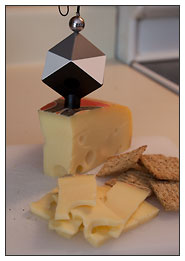 |
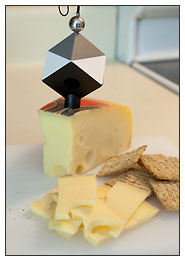 |
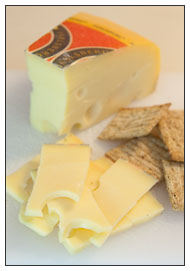 |
|
|
|||
I have no problem recommending the SpyderCube to serious photographers who care about good exposure and accurate color. It’s well worth the $59 price tag. The SpyderCube comes in a small box with a black velvet protective pouch and easy-to-follow instructions in ten languages. A tripod mount on the bottom and a small loop of string at the top make it easy to set up in a photo. You can order the SpyderCube direct from the Datacolor Web site as well as from respected online camera dealers like B&H and Adorama. The Datacolor Web site also has a directory of local “Spyder ProCenters” where you can buy the SpyderCube, Spyder monitor calibration hardward and get expert advice on all of Datacolor’s color management products.
Related Content:
Datacolor User Reviews
Datacolor Web Site
2009 PMA Tradeshow Coverage


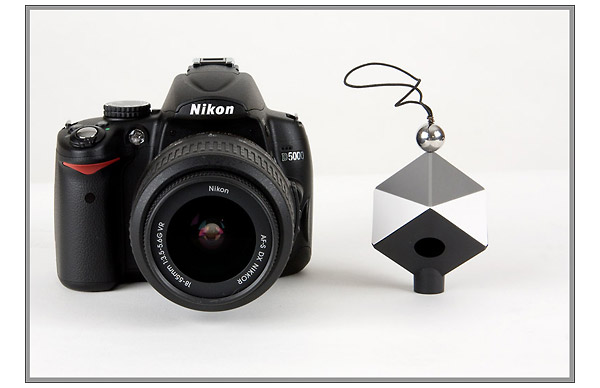
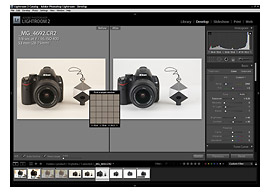
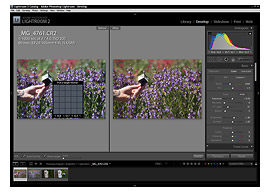
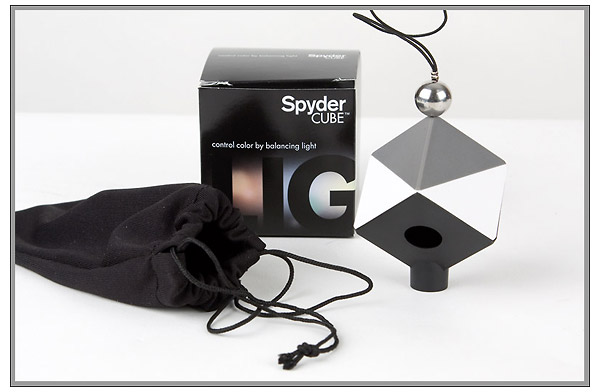
Sweet! Danielle does some product photos some times and this would really help to get things just right in the light box.
I have to tell you. You have a pretty damn good snacking regime with the crackers/cheese etc. you just need to work in more sugar coated marshmallow items…
-M
Ha – that’s not snacking. I live on cheese and crackers! And coffee. Can’t forget the coffee